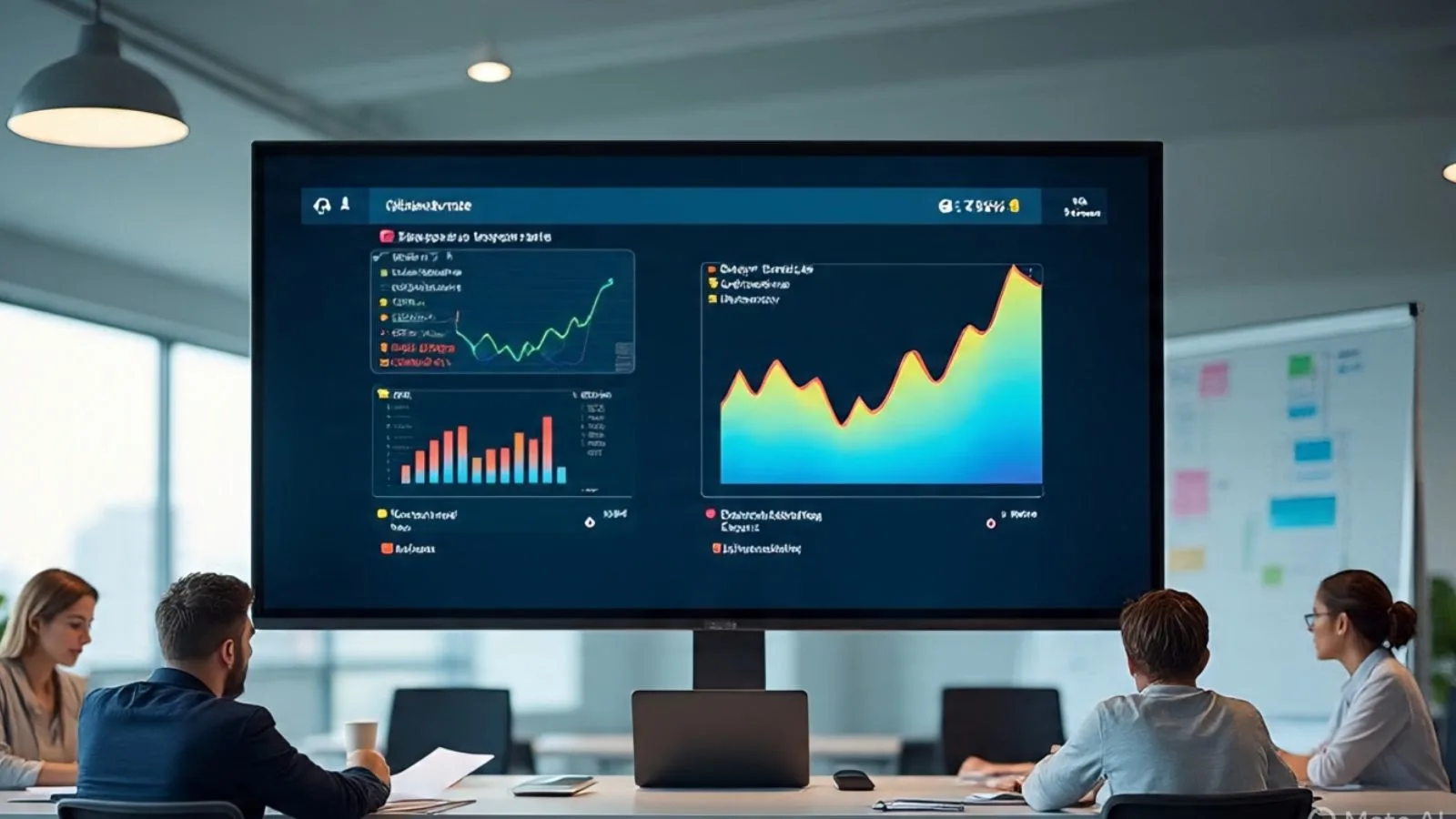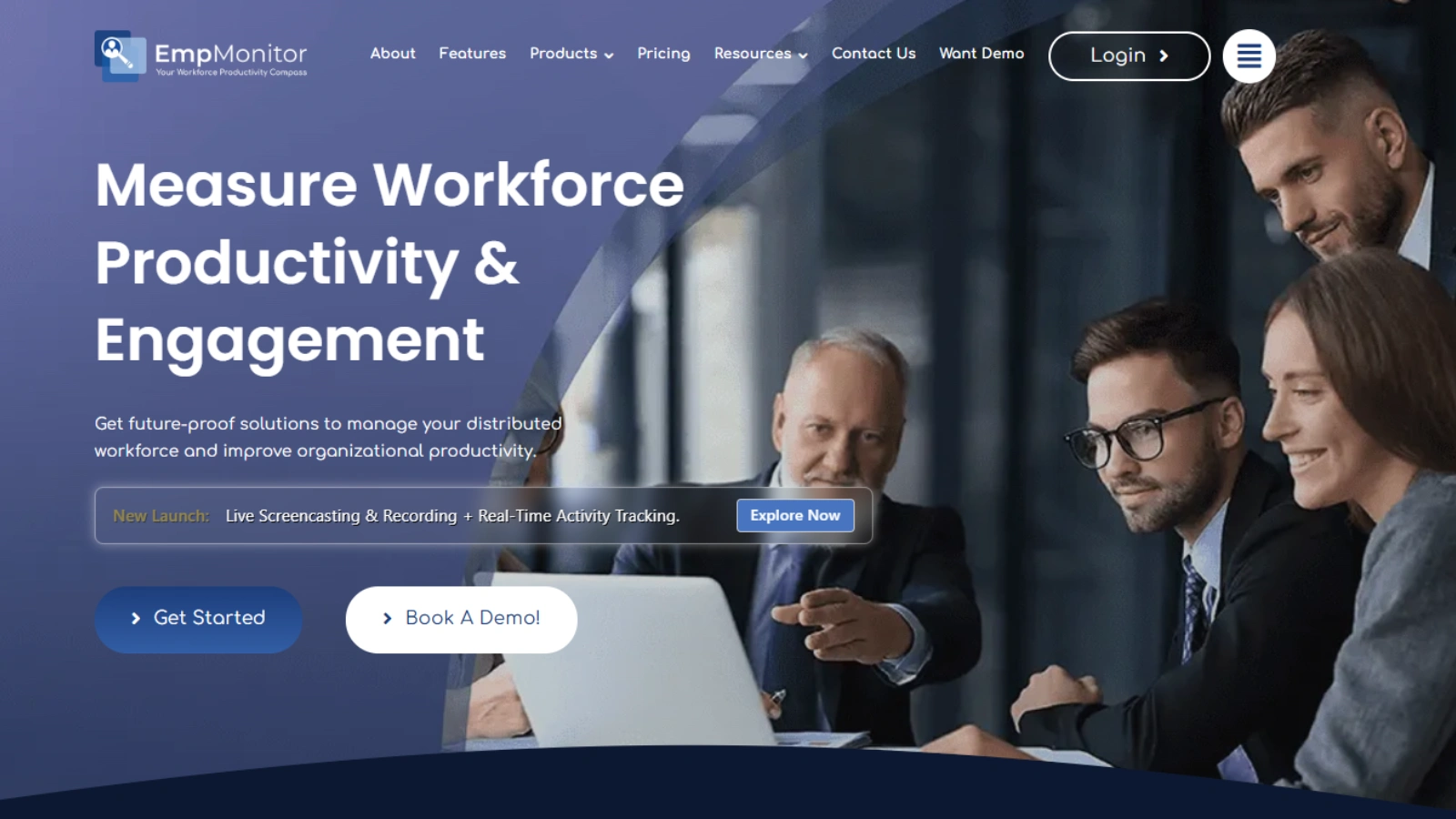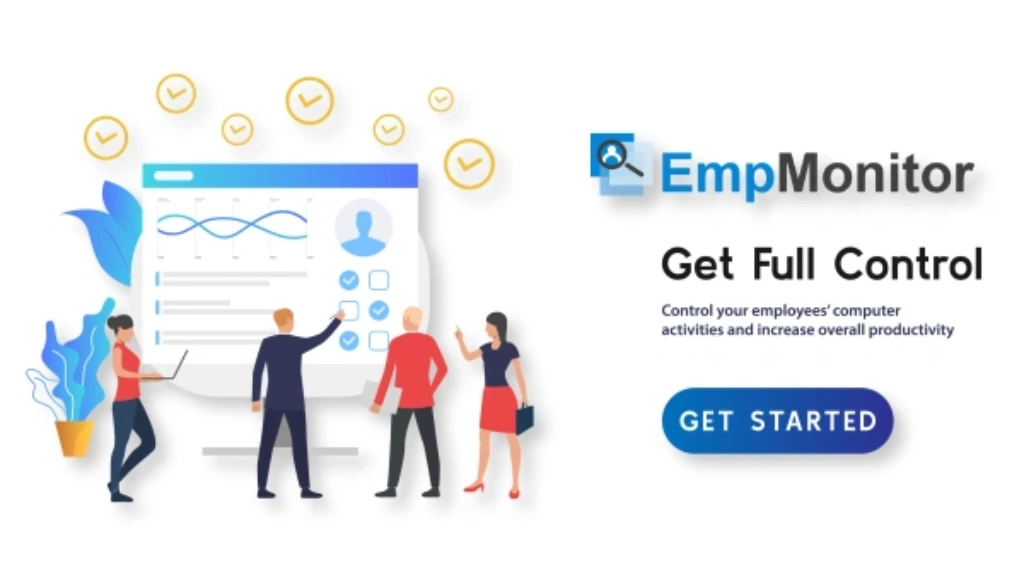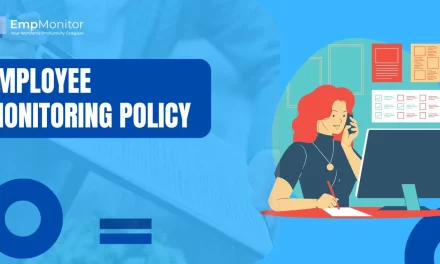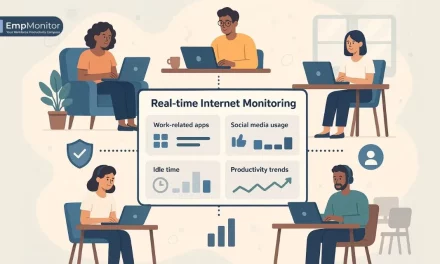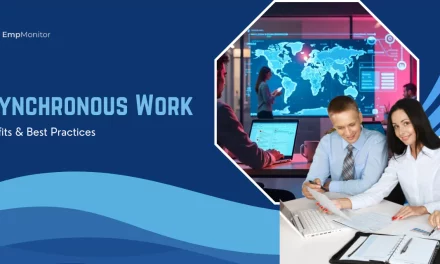When you’re managing an IT team, keeping track of how everyone’s doing can feel like chasing shadows.
That’s where employee performance metrics come in; they help you see what’s working, what’s not, and where your team might need support.
These metrics act like a map for IT managers, offering clear direction in a world where deadlines, bugs, and system issues never seem to stop.
But let’s be real, measuring performance in IT isn’t always simple.
Developers might spend days writing code that isn’t visible until the final product, while system admins keep things running smoothly in the background.
Unlike roles with obvious outputs, IT work is often quiet but critical.
That’s why using the right performance metrics, ones that reflect what your team does, is so important.
In this blog, we’ll break down the key performance metrics IT managers should focus on.
We’ll also talk about the difference between tracking for growth vs. micromanaging, and how using the right tools can make everyone’s life easier.
Whether you’re leading a remote development team or juggling multiple IT projects, this guide will help you make smarter, data-backed decisions without losing the human side of team management.
Listen to the Podcast Now:
Why Metrics Matter In The It Industry?
Managing an IT team isn’t easy. From tight deadlines to unexpected bugs, there’s always something that needs your attention.
That’s exactly why employee performance metrics are so important.
They give IT managers a clearer picture of how each team member is performing, helping you spot what’s working and what’s not, before small issues turn into big problems.
In IT, results aren’t always as obvious as they are in other industries.
A developer might spend hours troubleshooting a complex issue or writing code that no one sees, but it still plays a crucial role in the outcome.
Without a way to track that effort, it’s easy to overlook valuable contributions or miss bottlenecks slowing the team down.
Having the right metrics in place allows managers to make smarter decisions.
Whether it’s improving workflows, redistributing workloads, or providing support where it’s needed most, these insights lead to better team performance.
And it’s not just about productivity, it’s also about transparency.
When team members understand what’s expected and how their work is measured, they feel more engaged and confident.
At the end of the day, good metrics don’t just keep things on track; they help build a stronger, more efficient IT team that’s ready to deliver.
Key Employee Performance Metrics For IT Managers:
When it comes to managing an IT team, measuring performance goes beyond just checking who clocked in on time or wrote the most lines of code.
IT managers need reliable, data-backed employee performance metrics that reflect both productivity and quality of work.
The right set of metrics helps you identify top performers, assist struggling team members, and keep projects moving forward efficiently.
1. Task Completion Rate:
One of the most straightforward employee performance metrics, the task completion rate, shows how effectively an employee is meeting deadlines.
For developers, this could relate to the number of tasks completed in a sprint.
However, it’s essential to weigh quantity against quality; rushing through tickets just to finish them can lead to buggy code or missed requirements.
2. Bug Resolution Time:
In software development and support roles, the average time it takes to identify and fix bugs is a key indicator of performance.
Shorter resolution times can mean better troubleshooting skills and a deeper understanding of systems.
These employee performance metrics are especially useful in agile environments where fast iterations are the norm.
3. Code Quality and Peer Reviews:
High-performing IT teams don’t just deliver, they deliver with quality.
Code review feedback can reveal how often an employee performance metrics writes clean, maintainable code.
While it’s a more qualitative metric, peer reviews add context to the numbers and help promote a culture of continuous improvement.
4. System Downtime or Uptime Contribution:
For DevOps or IT support staff, measuring uptime contribution and response time during outages can help you understand how dependable your team is when systems are on the line.
These metrics give you a window into how effectively your team maintains infrastructure under pressure.
5. Client or Stakeholder Feedback:
Whether internal or external, client satisfaction plays a vital role in evaluating IT performance.
If a developer consistently receives positive feedback for understanding requirements and delivering high-quality solutions, that’s a clear sign of value to the organization.
6. Collaboration and Communication:
While technical skills are crucial, IT is often a team sport.
Measuring participation in team meetings, responsiveness to messages, and feedback in collaborative tools like Jira or Slack helps gauge how well an employee supports overall team dynamics.
Ultimately, choosing the right employee performance metrics means focusing on what truly drives success in your IT department.
It’s not just about what your team is doing, but how they’re doing it.
By combining quantitative data with peer insights, IT managers can foster a high-performance culture built on transparency, accountability, and growth.
How To Balance Quantitative Vs. Qualitative Metrics?
For IT managers, striking the right balance between numbers and nuance is key when evaluating team performance.
While employee performance metrics like ticket resolution time or code commits offer clear data points, they don’t always tell the full story.
A developer might meet every deadline, but what about the quality of their code or how well they collaborate with others?
That’s where qualitative insights come in; peer feedback, manager reviews, and even self-assessments provide context behind the numbers.
For example, a team member might score low on output but excel in mentoring juniors or problem-solving during system outages.
Using both quantitative and qualitative employee performance metrics ensures a well-rounded view of employee contribution.
IT work isn’t just about speed; it’s about innovation, teamwork, and long-term impact.
So instead of relying solely on data dashboards, combine your performance metrics with real conversations and soft skill evaluations to get the full picture.
Employee Performance Metrics Vs KPI’s: What’s The Difference?
When it comes to evaluating team productivity, especially in IT, it’s important to understand the distinction between employee performance metrics and KPIs.
While both help track effectiveness, they serve slightly different purposes.
employee performance metrics are data points that measure ongoing employee activities, like time taken to resolve bugs, the number of tickets handled, or code commits.
These metrics offer a snapshot of how well an employee is contributing on a day-to-day basis.
On the other hand, an employee KPI (Key Performance Indicator) is a strategic goal tied to the company’s broader objectives.
For instance, a KPI for a developer might be to reduce system downtime by 30% over a quarter. KPIs are usually fewer in number and more outcome-focused than regular performance metrics.
By using both together, IT managers can get a well-rounded view of productivity, tracking daily tasks while also ensuring long-term goals are on track.
Improving Results With The Right Metrics:
In a fast-paced IT environment, success depends on more than just delivering code; it’s about delivering quality work efficiently.
That’s where employee performance metrics play a crucial role. These data-driven insights help IT managers identify which team members are thriving, who needs support, and where processes can be optimized.
By regularly reviewing performance indicators like task completion time, bug resolution rates, and peer collaboration scores, you can proactively address bottlenecks before they affect project timelines.
However, not all employee performance metrics are equally effective.
It’s essential to focus on those that align with both team goals and individual roles.
For example, tracking login hours might be less valuable than measuring productive coding time or successful sprint completion.
The right metrics allow you to recognize top performers, offer timely feedback, and build a culture of accountability, without micromanaging.
When used correctly, performance data isn’t just a reporting tool; it becomes a roadmap to improved team efficiency and long-term success.
Engagement And Performance: A Two-Way Street:
In this fast-paced world of IT, performance isn’t just about how quickly a task gets done; it’s also about how connected and motivated the employee feels while doing it.
That’s why employee performance metrics alone don’t give you the full picture. You also need to understand what’s driving your team’s energy and focus behind the scenes.
This is where employee engagement metrics come into play.
They help IT managers gauge emotional investment, job satisfaction, and how involved team members feel in their roles.
Are your developers excited about what they’re building? Do they feel valued for their contributions?
Regular pulse surveys, anonymous feedback tools, and one-on-one check-ins are simple ways to track engagement without disrupting workflow.
When performance data is paired with engagement insights, managers can make smarter decisions, not just about what’s working, but why.
After all, a high-performing IT team is built not only on skills and KPIs but also on motivation, trust, and a strong sense of purpose.
Tech Tools That Help in Monitoring Performance:
Keeping track of how your IT team is performing can be tough, especially with hybrid or remote setups becoming the norm.
That’s where smart tech tools come in.
With the help of employee monitoring software, managers can get a clear, real-time view of what their team is working on, without micromanaging.
These tools don’t just show who’s online. They go deeper, tracking apps used, websites visited, idle time, and overall productivity.
Most importantly, they help generate meaningful employee performance metrics like task completion rates, active hours, and work patterns.
That kind of data helps IT managers make better decisions, support struggling team members, and recognize top performers.
If you’re looking for a tool that does all of this and more, EmpMonitor is worth checking out.
It’s designed to make monitoring effortless and insightful, offering powerful reports, detailed dashboards, and even real-time activity tracking.
With EmpMonitor, you can manage your team’s productivity without losing the human touch.
EmpMonitor: A Complete Tracking Software For IT Teams:
Managing IT teams effectively requires the right tools to monitor productivity and ensure optimal performance.
EmpMonitor offers five essential features that make employee performance metrics tracking seamless and comprehensive.
1. Comprehensive Dashboard:
Serves as your command center, providing real-time insights into team performance through intuitive visual reports.
IT managers can quickly assess overall productivity levels, identify trends, and make data-driven decisions at a glance.
2. Timesheet:
Functionality automatically tracks work hours and project allocations, eliminating manual time logging.
This feature helps managers understand resource allocation and ensures accurate billing for client projects while maintaining transparency in work distribution.
3. Live Monitoring:
Enables real-time visibility into employee activities, particularly valuable for remote IT teams.
Managers can see active applications, websites visited, and current tasks without being intrusive, ensuring accountability while maintaining trust.
4. DLP (Data Loss Prevention):
Protects sensitive information by monitoring file transfers, email communications, and USB usage.
This critical security feature helps IT managers prevent data breaches and maintain compliance with industry regulations.
5. Behaviour:
Analytics provide insights into work patterns, break times, and productivity peaks. This feature helps identify when team members are most efficient and reveals potential burnout indicators.
Together, these features create a comprehensive monitoring solution that enhances productivity while maintaining a positive work environment for IT teams.
Conclusion:
In the ever-evolving world of IT, performance can’t be left to guesswork.
Understanding and applying the right employee performance metrics helps IT managers identify strengths, address challenges, and drive continuous improvement.
But it’s not just about numbers; it’s about empowering your team to perform at their best without micromanagement.
By balancing data with context and using smart tools to support transparent tracking, you can create a work culture that values growth, efficiency, and engagement.
Start small, measure what truly matters, and let your metrics guide smarter decisions, for both your team and your organization.
FAQ’s:
Q1. What are the most useful employee performance metrics for IT teams?
Some of the most effective metrics include task completion rate, bug resolution time, code quality, and system uptime. These help managers understand both speed and efficiency.
Q2. How often should IT managers review performance metrics?
It’s ideal to review them monthly or quarterly. Frequent check-ins ensure employees stay on track without feeling micromanaged.
Q3. Can employee performance metrics monitoring negatively impact team morale?
Only if it’s done without transparency. When managers explain how monitoring supports productivity, not control, it builds trust.
Q4. What’s the difference between performance metrics and KPIs in IT?
Metrics measure specific activities like response time or code commits. KPIs are goal-driven, like maintaining 99% uptime or zero critical bugs in a sprint.
Q5. Do remote IT teams need different metrics?
Not necessarily, but visibility tools and time tracking become more important to ensure accountability and output.



